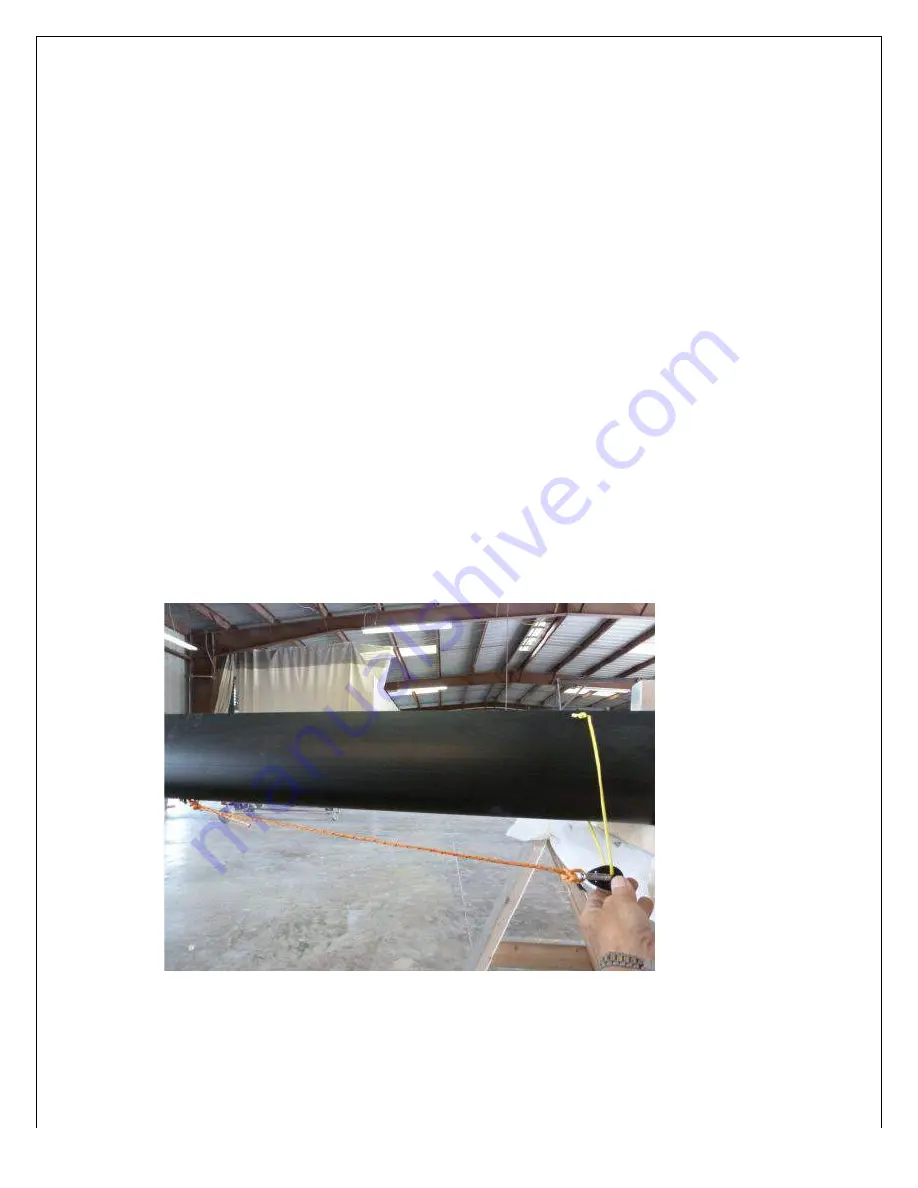
To raise the sail first pull the tack line to its full extent. This line should
automatically cleat under the front beam. If the line does not cleat check to make
sure the line is routed properly and that the tack release line is not tied too short.
The tack line should pass freely through the release ring, if the lines are tied too
short, the ring will put pressure on the line and not allow it to fully seat in the cam
cleat.
Then pull the spin halyard line from just below the swivel cleat mounted on the
mast. When the sail is fully raised, lift up the halyard and engage the cleat. To
lower the spin, pull on the halyard line in a sharp motion to release the main cleat.
Then pull on the halyard line from behind the 29mm guide block fastened to the
trampoline.. Dowse quickly. The spin will collapse and begin to be pulled into the
hoop. Once the “wad enters the hoop the tack will need to be released. Pull on the
tack release ring to release the tack line. Once this is pulled the spin is free to be
fully snuffed in to the bag. With a new sail this may pull a little hard at first. Also
note when testing on land with a slight head wind, or no wind, the sails may bunch
up on the bridals or around the pole. Avoid using excess force to snuff the sail
when it may be caught over or under an obstacle as you may rip the patches.
With the spinnaker fully hoisted, check the tension on the luff of the sail. Do this by
grasping the sail luff in your hand and twisting the sail approximately 2-3 feet above
the spin pole end. You should be able to freely twist the sail 45-90 degrees. If you
can move the sail more than this, or if it is too tight, the primary adjustment for this
is located at the top of the mast. The line connecting the spin turning block to the
head of the mast can be adjusted to achieve the desired spin luff tension.
23.0 - Spin Sheet
The spin sheet is fixed with a short section of Dyneema line spliced onto the middle
of the sheet. Tie this line to the clew of the Spin. Feed 1 side of the sheet down







































